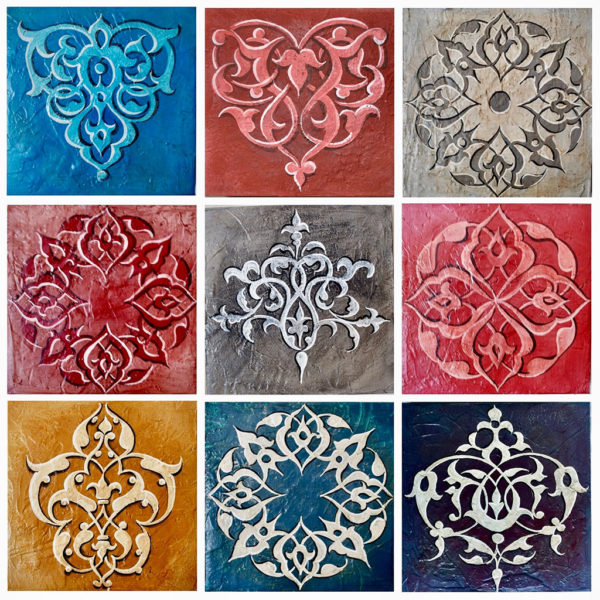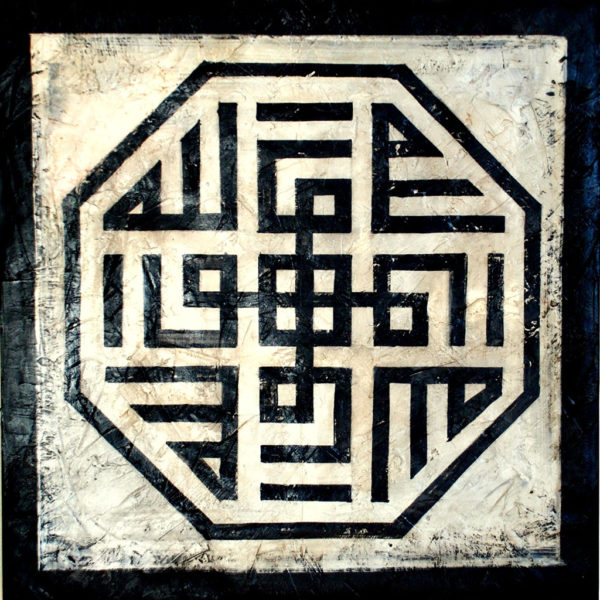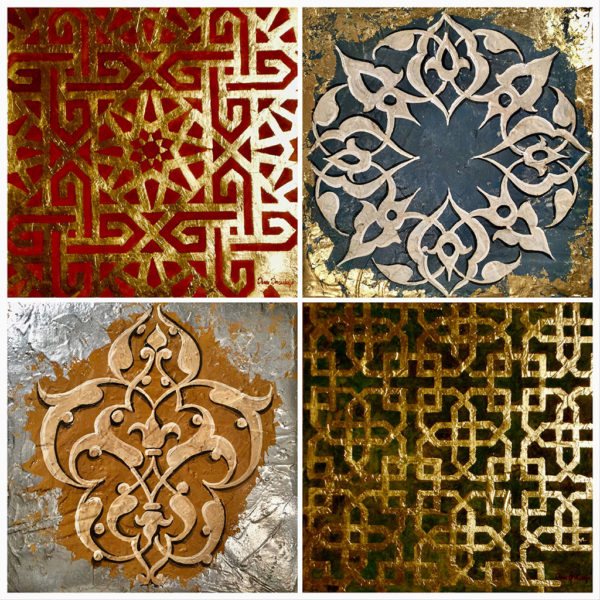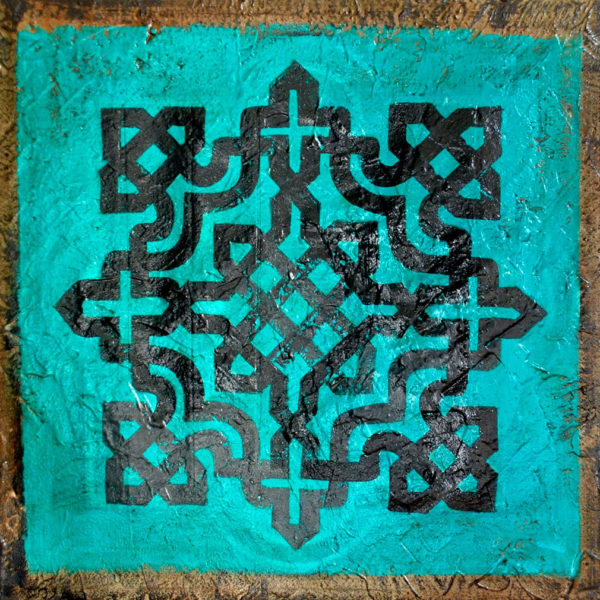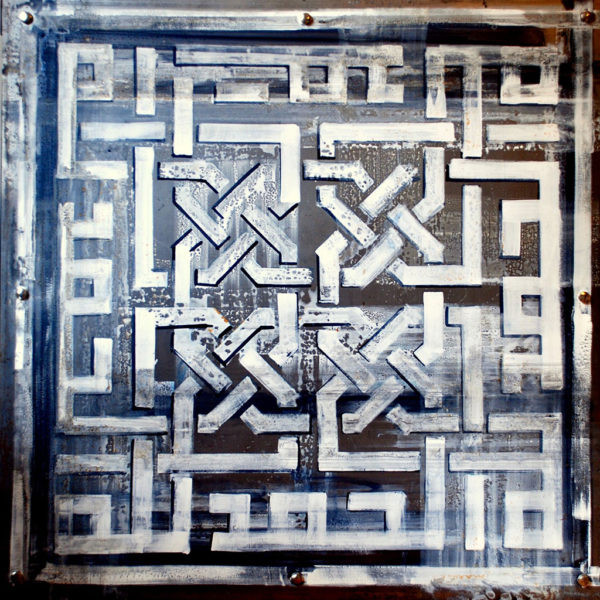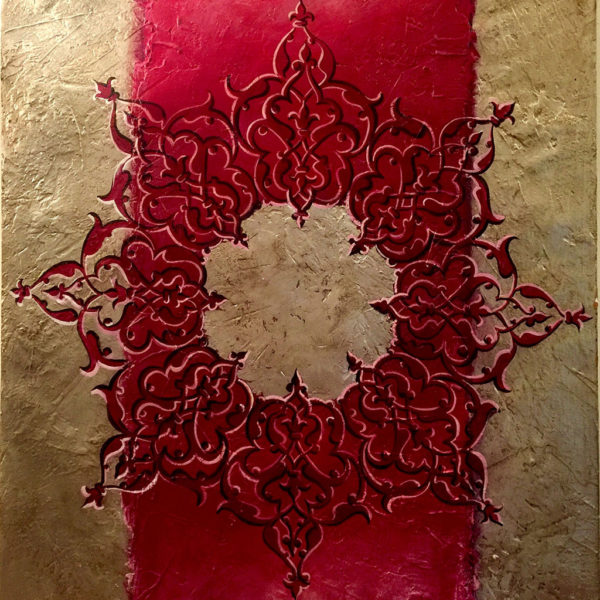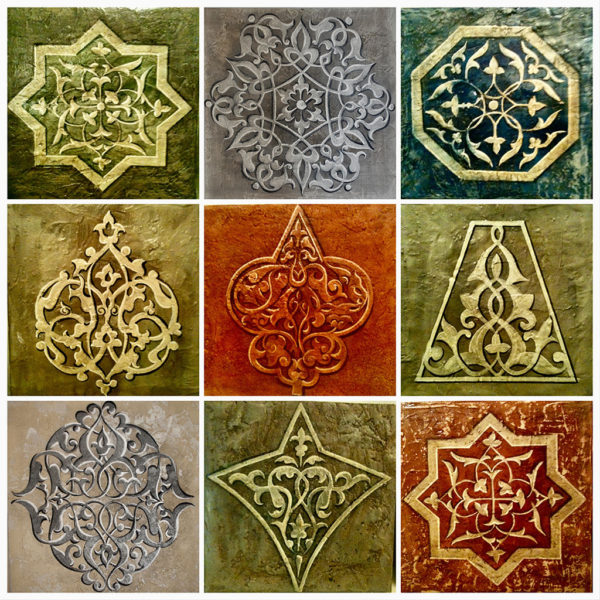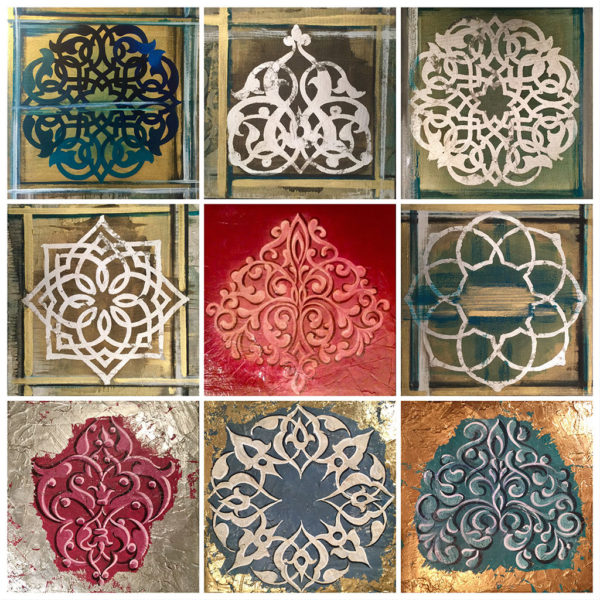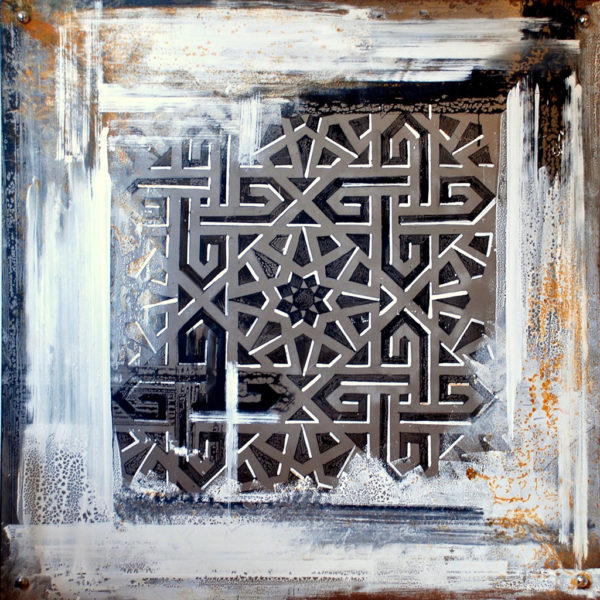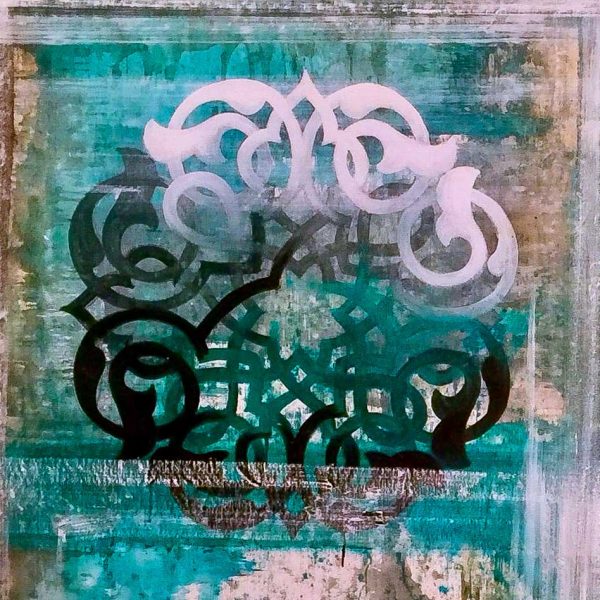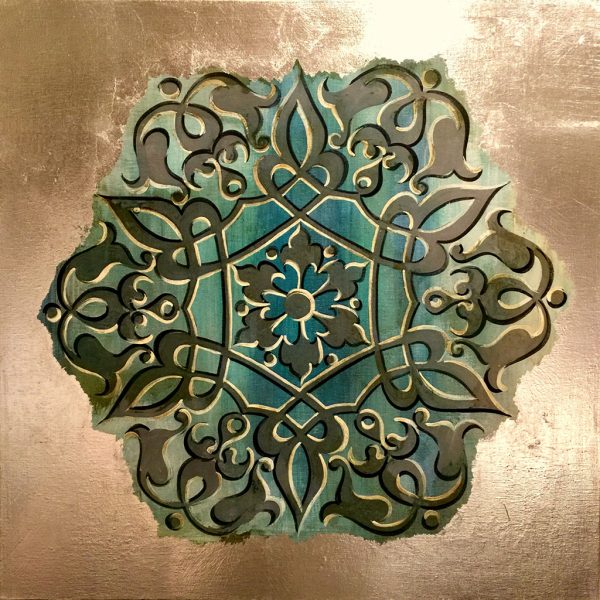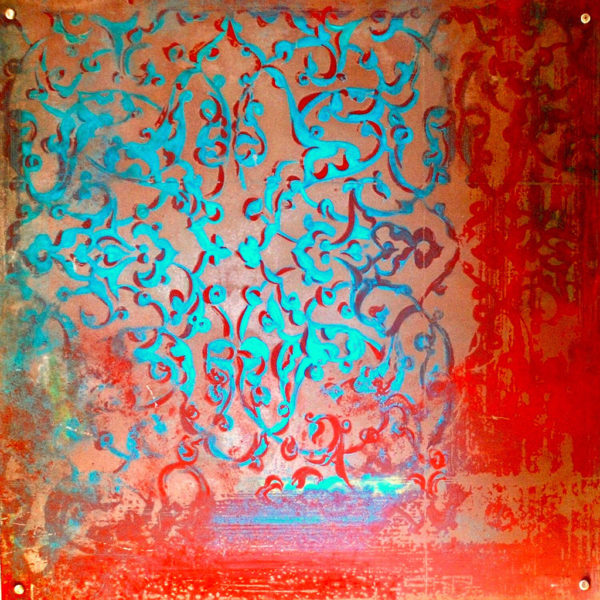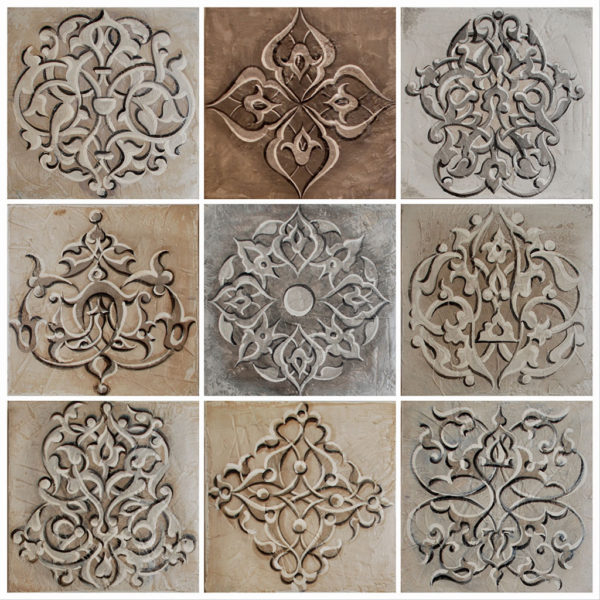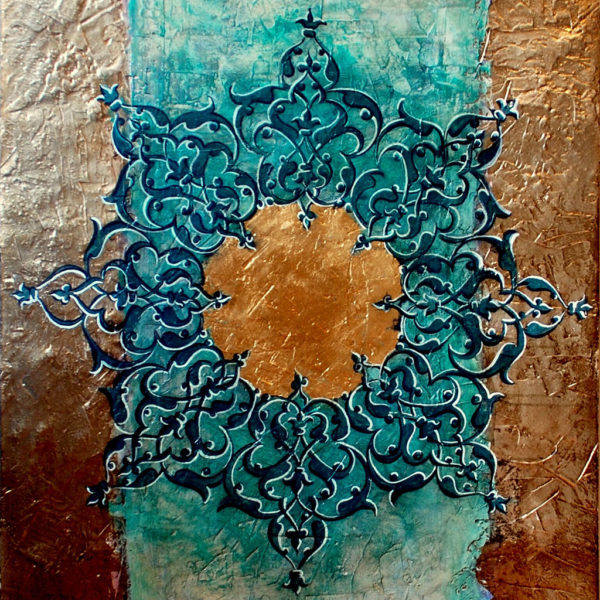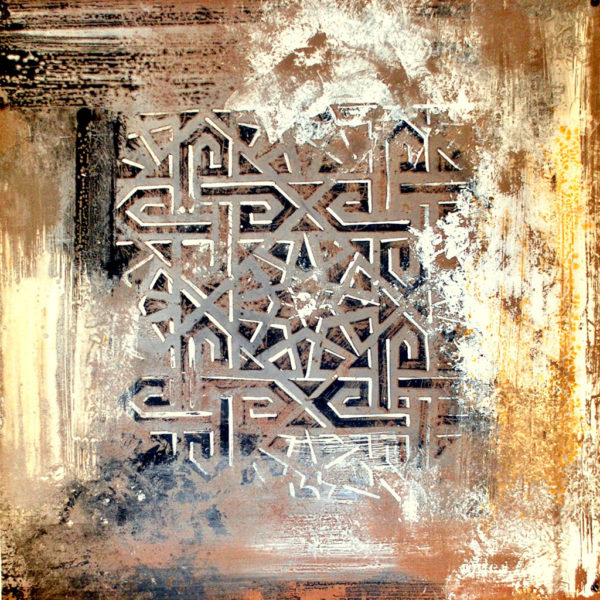The recurrent decorative motifs are an intricate and fascinating geometric composition that incorporates vegetal, floral motifs composed of veins of color that change their own color, after intersecting each other. Their richness and variability arise from the subdivisions and the linear extensions of the geometric network and from the continuous connection and wrapping of the forms that cause new sub-units and new forms.
The multicolor that is distinctive of these decorations shows that the decorative model is not immediately apparent, it is not to be grasped at the first glance: indeed no veining holds its color when it intersects with another; the drawing emerges after a short time of “immersion” under the vein that crosses and changes its color, as if it suggested an interruption of this subsequent movement.
Often the contrast of color seems to be aimed at dividing the image into the domain of the obvious and manifest, and in the domain of the veiled, covered and hidden. The decorations obtained through the connection of color breaks are typical of oriental culture. Circular movement is very common, movement from one sign to another and vice versa is, as it were, the center of life and being. The “interweaving” of the signs is the point of intersection perceived as a sort of generator center.

